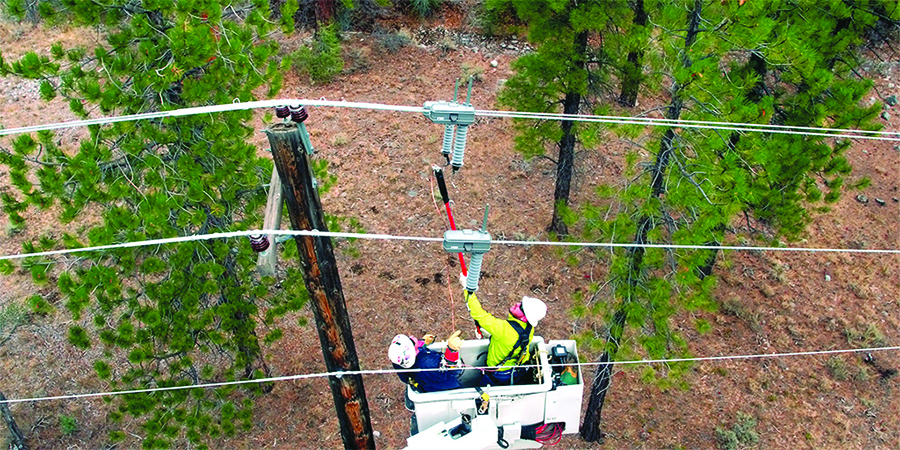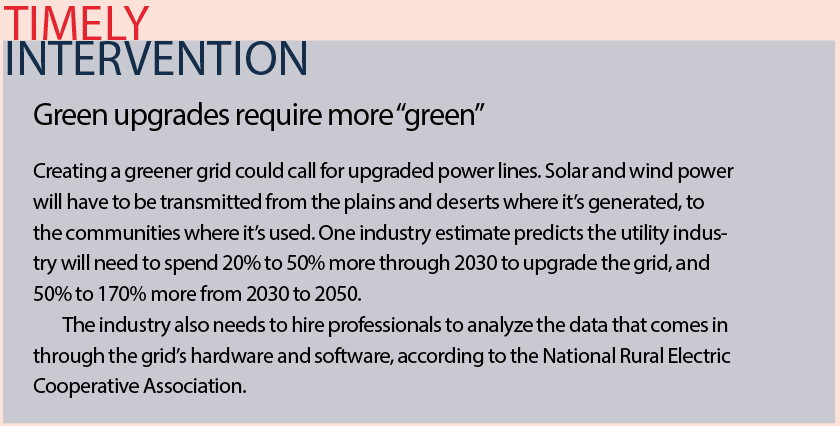Creating a greener grid

Electric co-ops use electronics and analytics to welcome renewable energy
To actually see the green power revolution, look up at the power lines. If you spot a little box about the size of a tennis shoe clamped onto a power line, you’re looking at something that’s bringing in a whole new era in energy.
It’s a sensor, a container of electronics that collects and sends out information about the wire it’s on, from the voltage inside to the temperature outside.
Sensors, which also are being used with other electrical equipment, are one of many technologies that are enabling changes in the way the electric grid is planned and operated, like the rapid growth in renewable energy, says Venkat Banunarayanan, senior director of integrated grid technologies for the National Rural Electric Cooperative Association (NRECA).
Plugging in electric vehicles
One of those renewable energy changes is growth in electric vehicles. Banunarayanan notes that every major car company is planning to increase production of electric vehicles, including large and small commercial trucks.
What happens at night when all those semitrucks pull into a warehouse or an interstate rest stop and plug in?
“There are infrastructure, business model and communications issues,” says Banunarayanan. “What are the ways in which the infrastructure needs to be strengthened for commercial trucks to be electrified … what are the implications in a residential subdivision if everyone plugs in at the same time to charge their vehicles?”
This could include incentives for charging during off-peak periods—midday or the middle of the night—and educating consumer-members on the most economical electric vehicle charging periods.
Managing wind and solar power
The U.S. electric utility network is moving from one that used to send a mostly steady stream of electricity from large coal or nuclear power plants to a system where power moves back and forth, off and on.
Those sensors are part of the secret to how the grid manages that, says Banunarayanan.

“You install sensors at different points on the grid and you can get an accurate picture of how the grid is performing,” he says. “The more sensors and real-time information you can get back to the grid operators, the better they can identify and address problems.”
Wind and solar power now generate 8% of our electricity. The on-again, off-again nature of wind and solar means your electric co-op needs to be ready to switch among power sources instantly.

